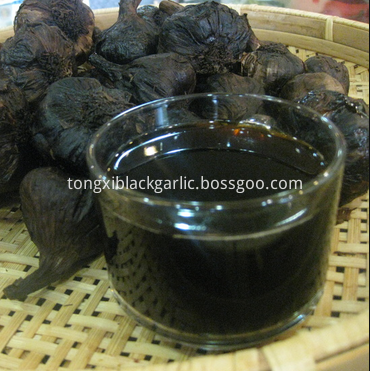Black Garlic contains 18 kinds of amino acids,
garlic-ene, peptides, polyphenols, active SOD,
biological enzymes, glycosides, vitamins, lipids,
trace elements, carbohydrates, green sulfur
compounds, easily absorbed by the human body
composition. The structure ratio is reasonable, and
without any side effects.
18 kinds of amino acids:
Alanine Ala. Isoleucine. Leucine. Lysine. Methionine. Cystine. Phenylalanine. TYR. Threonine. Trytophan. Valine. Arginine. Histidine. Asparagine. Glutamine. Glycin. Proline. Serine.

Black Garlic Extract/Concentrate/Juice
Black Garlic Extract,Black Garlic Juice,Black Garlic Concentrate,Organic Garlic Juice
Zhucheng Tongxi Commercial And Trade Co.,Ltd. , http://www.blackgarlicgroup.com